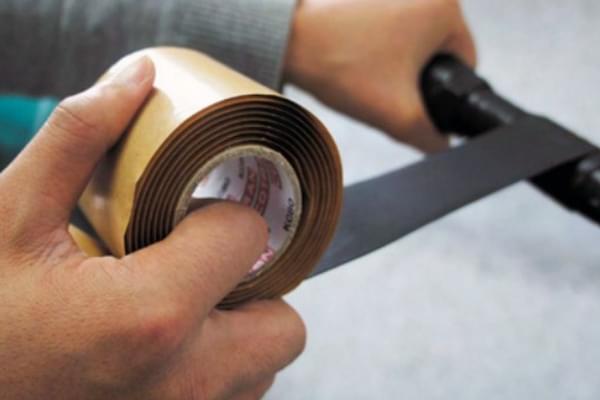Rubber / Resin Adhesives
These adhesives can be used to give high tack and shear tapes. They have limited temperature and solvent resistance when compared against silicone and acrylic adhesives. They can be easily coloured by the use of pigments and can be filled with other components. The major applications of rubber PSA’s are splicing tapes and transfer tapes. Rubber/ resin adhesives can be divided into the following categories:
Thermosetting Rubber/ Resin Adhesives
When a thermosetting rubber/ resin adhesive is subjected to the correct curing temperatures, it will provide increased adhesion, solvent resistance and heat resistance. The ideal thermosetting conditions are as follows:
1 Hour @ 150oC
2 Hours @ 130oC
Precured Rubber/ Resin Adhesives
Precured Rubber/ resin adhesives have good resistance to solvent and temperature, but when cured at the correct curing temperature will increase the properties of the adhesive. The correct curing temperatures for pre-cured thermosetting rubber/ resin adhesives are as follows:
1 Hour @ 150oC
2 Hours @ 130oC
4 Hours @ 100oC
Acrylic Adhesives
Acrylic adhesives, which are based upon synthetic polymers, offer improved temperature, solvent and UV resistance when compared with rubber/ resin adhesives. They have high adhesion and shear strength. These can be also easily coloured with pigment and dyes. Acrylic adhesive tapes have many uses which include masking tapes, inner wrap for oil filled transformers and splicing tapes.
Acrylic adhesives are based in two forms:
Solvent Based Adhesives
These offer high temperature, solvent, moisture and ageing resistance. Acrylic adhesives can also be divided into thermosetting and pre-cured thermosetting.
Acrylic Emulsions (water based) Adhesives:
These are used mainly for labelling and medical applications because of water absorption and skin contact. They do not possess the same resistance to temperature, solvent and moisture as solvent based acrylic adhesives. During their manufacturing process, water based acrylic adhesives are stabilised with a hydrophilic (“water-liking”) component. Once such adhesives are dried, the water present in adhesive is dispelled; however the hydrophilic component is incorporated into the bulk of the adhesive. Incorporation of a water/ humidity sensitive component into the adhesive itself can lead to long term instability and possibly a variation in adhesive properties when exposed to variations in humidity. Needless to say where these hydrophilic components are present, they may induce metal (copper) corrosion in particular where salts are also present in the adhesive. For these reasons water based adhesives are not favoured for electrical/ electronic applications.
Silicone Adhesives
Silicone adhesives offer high temperature, chemical/ solvent, UV and radiation resistance. Silicone adhesive tapes are used for high temperature masking applications due to removability without leaving residue, splicing tapes for silicone surfaces and other low energy surfaces.
Other types of adhesives
Heat Activated Adhesives
These are mainly natural rubbers, which when activated by temperature, provide high adhesion and
shear strength. These adhesives have limited resistance against temperatures and solvents.
Thermal Release Adhesives
These adhesives exhibit very smooth low peel adhesion combined with good room temperature tack (instant adhesion).These properties combined ensure that these adhesives can adhere to the many substrates with a strong initial adhesive force.
Electrically Conductive/ Anti-Static Adhesives
A layer of conductive particles embedded within the adhesive provide a pathway for electrical current to flow between substrates. This layer will also dissipate static charge, preventing a build-up in static sensitive applications.
Thermally Conductive Adhesives
A layer of thermally conductive particles in the adhesive allow heat to pass through the adhesive. They are mainly used in the attachment of heat sinks to PCB’s.



